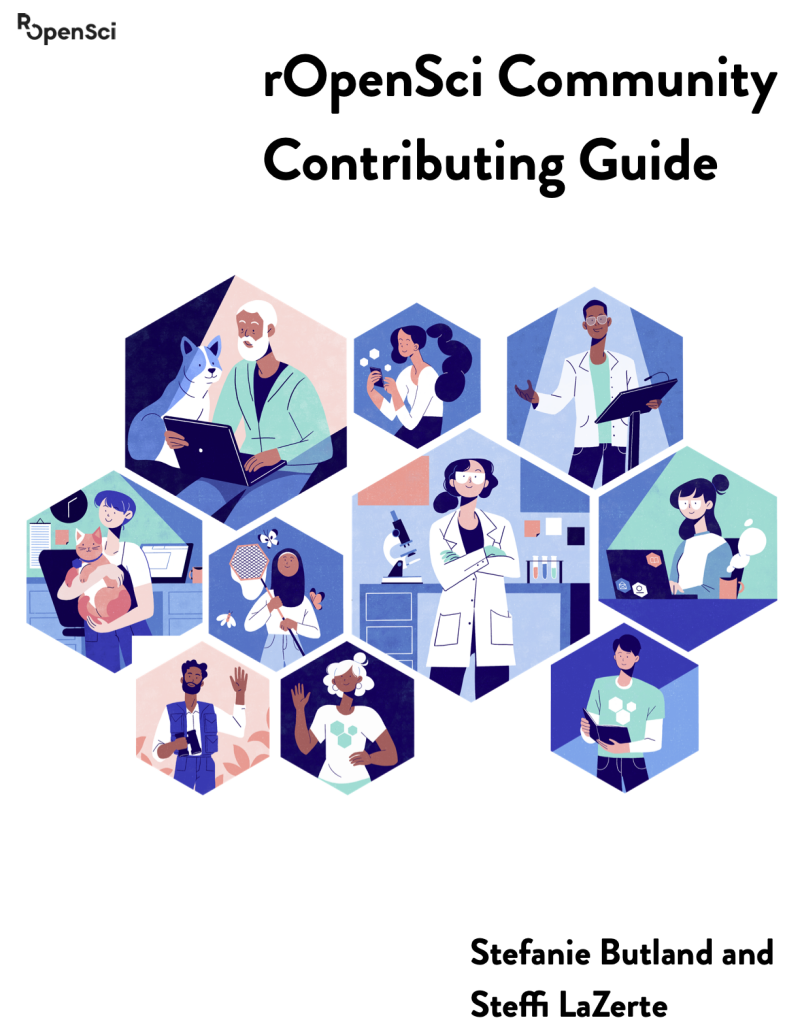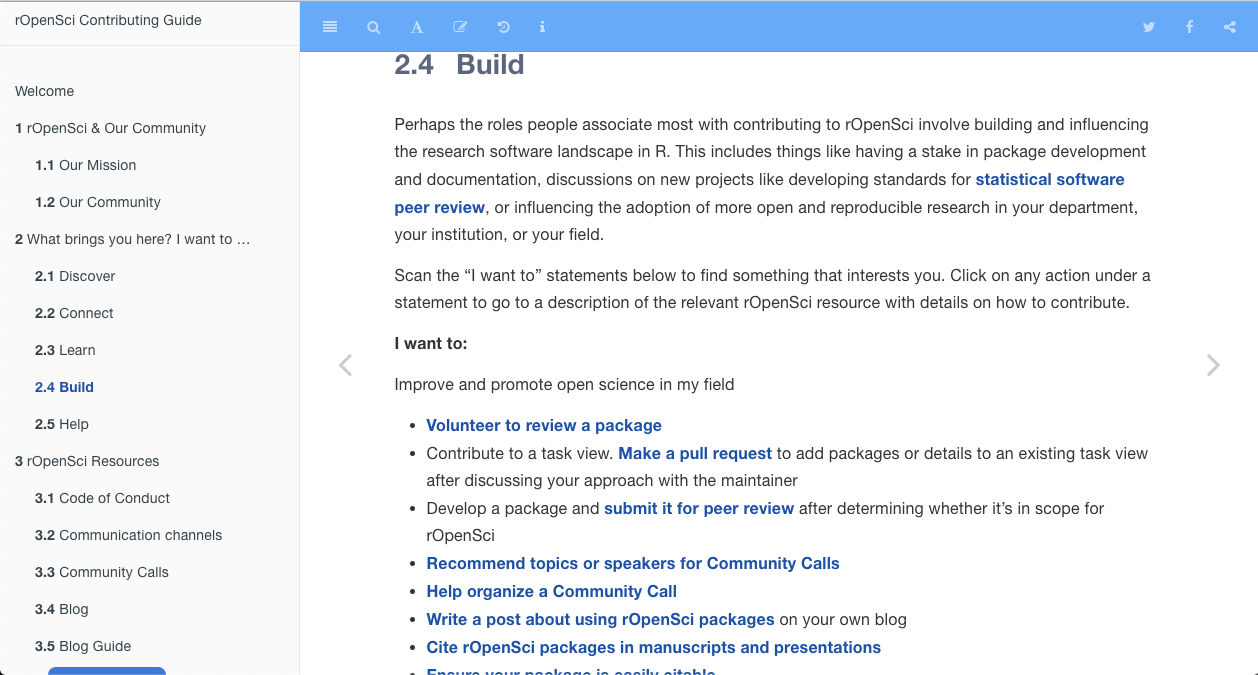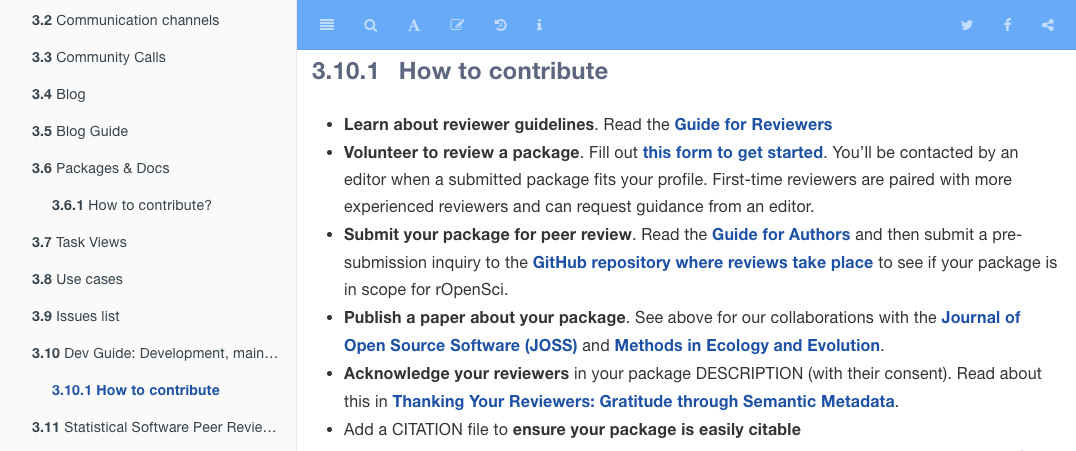Wednesday, January 20, 2021 From rOpenSci (https://ropensci.org/blog/2021/01/20/contributing-guide/). Except where otherwise noted, content on this site is licensed under the CC-BY license.
Many people in our community actively contribute to rOpenSci projects. Many others would like to contribute but aren’t sure how to go about it. Wanting to get involved in rOpenSci or “give back to open source” means different things to different people. Ideally, a person should be able to find a way to contribute that meets their needs and fits our mission. We created the rOpenSci Community Contributing Guide1 to make finding paths to contributing more transparent and sustainable.

Cover illustration by Lydia Hill
We welcome contributors from a continuum of experience: from those who consider themselves newcomers exploring the landscape and trying to see where they fit, all the way to more experienced folks who know exactly what they have to offer. We welcome code and non-code contributions from people at any career stage, and in any sector.
. . . users pursuing their own “selfish” interests build collective value as an automatic byproduct. (Tim O’Reilly on The Architecture of Participation2)
Maybe you want to spend 30 minutes sharing your package use case in our public forum or reporting a bug, 1 hour learning by attending a Community Call, 5 hours reviewing an R package submitted for open peer review, or maybe you want to make an ongoing commitment to help maintain a package. Our guide will walk you through the many avenues available.
🔗 Overview
The guide has three chapters.
rOpenSci & Our Community shares our mission, what it means to be part of our community, and introduces you to some Humans of rOpenSci.
What brings you here? is framed around different motivations. To help you recognize yourself, we categorized what we think contributors want into: Discover; Connect; Learn; Build; Help. Each has a set of “I want to” statements like “I want to discover packages I can use to facilitate my research and access open data”. Clicking on any action under a statement takes you to Chapter 3 for a description of the relevant rOpenSci resource with details on how to contribute.

- rOpenSci Resources brings pointers to all of our resources together in one place. Each has a brief description and “How to contribute” with a set of specific actions that link out to the primary resources needed.

🔗 A model for other communities?
In our dreams, the rOpenSci Community Contributing Guide can be a model for other open source communities to enable more transparent and sustainable participation.
We’re always standing on the shoulders of giants, some of whom might not think of themselves that way. The motivation, approach, design, tone, and content of this guide was influenced by many who are cited in our bibliography.
🔗 Thank you’s
Thank you to Julia Stewart Lowndes, Toby Hodges and the rOpenSci team for their input. This work was supported in part by a NumFOCUS Small Development Grant to rOpenSci.
Stefanie Butland, & Steffi LaZerte. (2020). rOpenSci Community Contributing Guide (Version v0.1.0). Zenodo. http://doi.org/10.5281/zenodo.4000532; Source available on GitHub ↩︎
Tim O’Reilly (2004). Open Source Paradigm Shift. https://www.oreilly.com/pub/a/tim/articles/paradigmshift_0504.html ↩︎

